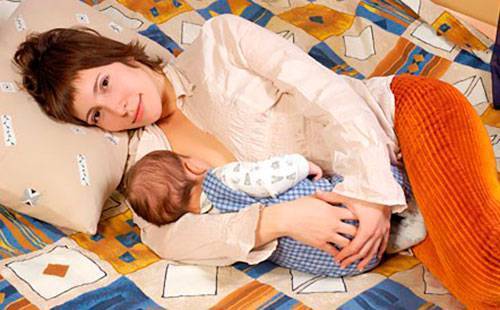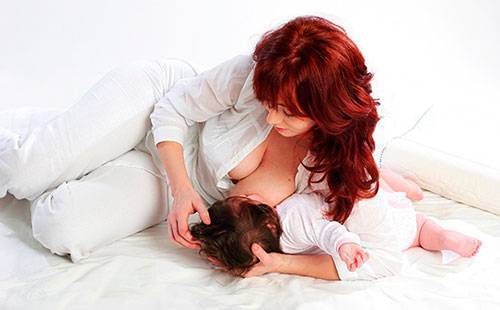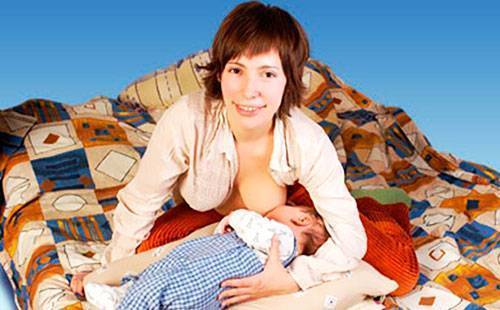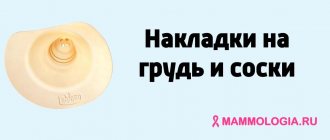Breastfeeding is one of the most important links in the proper development and health of a baby.
It is not surprising that most mothers strive to breastfeed their baby for as long as possible, spending several hours a day on this procedure. In order for this process to bring only joy and pleasure to both mother and baby, you need to choose the right positions for feeding newborns.
What are they?
Which postures should be preferred depending on the situation?
In this article we will reveal all the secrets of proper breastfeeding.
Baby's position during breastfeeding
- You should feel comfortable and relaxed.
- You need support for your arms and back. If you are feeding while sitting, your feet should rest completely on the floor.
- The baby should be held close to you.
- You need to support your baby's body securely.
- The baby should be facing your chest.
- Baby's mouth should be slightly below the nipple when latching (the nipple points toward baby's nose).
- The baby's head, neck and body should be at the same level.
- There is no need to put pressure on the back of the child's head; the back of the child's head should be free. It is important for your baby to move his head freely to regulate his breastfeeding.
- It is very important that the baby’s hands are free when applying to the breast. Stroking your baby's hands increases your oxytocin levels.
- Another important principle of latching: bring the baby to the breast, not the breast to the baby.
- You do not need to press your finger on the upper chest to allow your baby to breathe through his nose. In fact, the baby can breathe freely if attached to the breast correctly. But such pressure with a finger disrupts the flow of milk from the upper lobe.
Lying down
The position is convenient during night applications. Obstetricians recommend that in the first month there should be no more than four hours between night feedings. If the baby sleeps soundly all night, he should be offered the breast; he will reflexively begin to suck. Mother and baby should face each other.
On the side
Side lying pose
A nursing mother can lie on her side, supporting her head with a bent arm. The child's head is placed on a soft eminence, the bend of the elbow. With her free hand, the mother can stroke the baby on the back, hold her close, and hold her breast.
The newborn must lie sideways so that his neck is not twisted. A cushion placed under his back will prevent him from accidentally rolling over.
A mother in a lying position will be able to feed the baby from both breasts without changing her place. To offer the upper gland, it is enough for her to turn sideways, bending slightly over the child.
"Jack"
The pose is useful for lactostasis, when milk accumulates in the upper lobes of the glands. The legs of the mother and baby lie in opposite directions. A child in this position empties the breast well. This position is suitable for women who have undergone a caesarean section, have stitches in the perineal area, and are forced to breastfeed for a long time.
On mom's belly
Pose on mom's belly
The pose is called “self-attachment.” The mother places the baby on her own stomach and gives him the opportunity to find the nipple on his own. While the baby is fed, the woman will rest as much as possible. You can stroke the child’s back and support his head.
The method is good for hyperlactation; the baby will not choke on excess milk. Touching the belly has a positive effect on the baby's digestion, minimizing the appearance of gases in the intestines.
Overhang
Hanging pose
The pose allows you to properly empty the lobes of the central and lower parts of the gland. This type of feeding is suitable for a baby if it is difficult for him to suckle on his own. For example, if the baby has been drinking from a bottle for a certain time before, is weakened by a difficult birth, and is lazy.
Feeding can be done on the bed or at a table. The mother takes a position on all fours and places the child on a soft elevation perpendicular to her body. His head may point slightly towards his chest. If it is on the changing table, the woman only needs to bend over the baby.
Football Breastfeeding Position
Great for feeding low birth weight or premature babies.
- To make you feel comfortable, place a pillow under your shoulders and firm pillows on your sides to raise your baby to chest level.
- The child is turned to face you, and his body is at your side under your arm.
- Baby's buttocks are positioned on the pillow next to your elbow, and baby's legs are behind your body and resting on the back of a chair or on the wall if you are sitting up in bed while breastfeeding.
- The baby's shoulders lie on your forearm, you support the baby with your hand from behind the neck.
- You should not bend your baby's head when you bring him to your breast. The child's neck should be straight.
Main rules of application
Correct application. The baby grasps the nipple and part of the areola.
After the baby is born, it must be attached to the breast. This way, he will begin to develop a sucking reflex, and milk production in the mother’s body will increase.
General application rules:
- The baby's head and torso (ear, shoulder, abdominal area, legs) should be located on the same straight line. In this position, the mother turns the baby on his side, facing him.
- The whole body of the newborn should be clasped by the mother's hand, the head should be carefully fixed.
- The child's neck should be straight. He will not be able to suck with his head bent or thrown back.
- A newborn does not immediately understand how to suck. It is necessary to ensure that it captures the nipple well with part of the areola (nipple circle). Otherwise, the baby may swallow air with the milk, which will not have the best effect on digestion.
- A woman should not feel discomfort or pain during feeding.
Supine position
This type of breastfeeding is convenient immediately after childbirth, when mother and baby are still in the delivery room, as well as after a cesarean section or episiotomy. This position is suitable for women who have large breasts and a fast flow of milk, since in this position the milk does not flow so quickly and the baby will not choke.
- Your head is on the pillow.
- The baby's body is positioned evenly, along your body.
- You support the child with your hand. It is better to place a pillow under this arm to make it more comfortable to support the baby.
- Make sure you apply it correctly.
Now, having mastered the theory, you can breastfeed conveniently and comfortably for both you and your baby.
From under the hand
Overhand pose
The “under-arm” pose is considered comfortable for a woman, since there is no need to hold the child in her arms. The method is ideal for women who gave birth by cesarean section, since the incision area is not touched by the baby’s legs and there is no strain on the abdomen.
To breastfeed, a woman must:
- sit down;
- place the child on his side perpendicular to his body;
- the baby's legs go behind her back.
It is better for the newborn's head to be positioned at nipple level. A folded blanket on which the baby should be laid will help with this. During the process, mom will be able to lean on her elbow. She will be able to support the baby's head with her other hand. The pose allows you to sit in a wide chair with armrests.
Jack pose
Another popular option for breastfeeding a baby is lying in the jack position. It involves positioning the child head down and legs up. Suitable for improving the emptying of the milk lobes, which are located in the lower part of the breast. Stagnation of milk in the upper ducts can lead to lactostasis and mastopathy. Therefore, it is recommended to practice different methods of latching so that the baby can empty all the milk lobes.
The nuance is that when the mother holds the baby's head, it is necessary to avoid pressing on the back of the head and be careful with the fontanel. Movements should be smooth and soft. Light touching or holding the child is acceptable.
It is necessary to control the baby's movements. The optimal period is up to 4 months, until the baby learns to roll over. Active movements of the legs can cause discomfort for the mother in terms of unexpected pushes and kicks. Do not forget that during or after feeding the baby can do “his own business.” If he is in a diaper, then this is the best option. Otherwise, you may have to take an unplanned joint bath.
How to feed during pregnancy
By the third trimester of pregnancy, milk begins to change and becomes less abundant. This is a natural process that leads to renewed milk for the next child. If your son or daughter does not eat enough, you should start introducing complementary foods.
The main problem is the mother's growing belly. The baby's sucking should not put much pressure on him. Suitable poses: jack, standing, from under the arm. If the baby does not want to give up breastfeeding, he will find the optimal solution for himself.
Feeding lying down
The most comfortable position for breastfeeding is lying down. They help the woman to relax, you can even sleep next to the baby, because in the first days of life he suckles for quite a long time.
Find a suitable place for feeding: a sofa or bed. Sofas with a back are comfortable and safe: if necessary, you can leave it without the risk of the baby falling.

On the side
One of the popular positions used by women who have had a caesarean section. It eliminates pressure on the painful abdomen, which helps the mother endure the postoperative period more easily. The position becomes the main one for quiet night feedings when sleeping together. Neither you nor your baby will have to wake up for a snack at night.
Lie on your side, avoid resting on your elbow. Place a low pillow under your head. Position your baby side by side, just below the nipple
It is important that his head is thrown back, which will allow him to open his mouth well. Place the breast into the baby's mouth. Hold the baby with your hand under the shoulder blades. Place a towel cushion under the baby's back if you plan to take a nap. This position may not be suitable for mothers of miniature babies, since lying on the side the baby cannot reach the nipple
In this case use the following position
This position may not be suitable for mothers of miniature babies, since lying on its side the baby cannot reach the nipple. In this case, use the following position.

On the hand
The baby's head appears slightly raised. This helps solve the problem of differences in the level of the nipple relative to the mouth. The mother does not need to reach out to the child, which often creates inconvenience: the elbow becomes numb, the back hurts.
- Lie on your side, make yourself comfortable.
- Place your baby on your side, with his head on your forearm.
- Hold his butt with the same hand. Give the breast freely.
To make you comfortable, provide support for your head. Use a pillow, but don't lie high on it; let your shoulders remain on the bed. This way you will prevent neck pain.

Baby pillow
Use a pillow instead of your own hand to support your baby. Your hands will remain free, and your baby will easily reach the nipple.
- Place a pillow on the bed and lie next to it on your side.
- Place your baby on his side on a pillow.
- Hold the baby by the shoulder blades and place the breast in his mouth.
Make sure that the pillow lies as close to you as possible. For proper feeding, it is necessary that the baby's tummy is pressed against yours.

Pillow for mom
In this position, a woman feeds with her upper breast. This helps in solving the problem of milk stagnation in the lateral lobe of the mammary gland, which is difficult to release in other positions.
- Place a pillow under your head, lie on your side, and lean forward a little.
- Place the baby on its side next to it.
- Place the upper breast in your mouth and hold the baby's bottom with the same hand.
A larger pillow is suitable for this pose, but you should only lie on it with your head to prevent neck pain.

Jack
An unusual, at first glance, position that will help solve the problem of milk stagnation. If too much of it arrived and the baby was unable to fully empty the breast, there is a risk of developing lactostasis.
It is facilitated by the uneven release of the mammary glands: stagnation does not occur in those lobes towards which the baby’s chin is turned during feeding. Therefore, if you feel a tightness in the breast from above, among all the positions for feeding the baby, choose the “jack”, which will help with lactostasis.
- Lie sideways on a pillow. Place your elbow behind your head so that the pillow is in your armpit.
- Place your baby next to him on his side so that his legs “look” in the opposite direction from you.
- Place the breast closest to it into your mouth and hold it by the shoulder blades.
To breastfeed, lie on the side in which breast congestion has formed.

Overhanging
The position is identical to side feeding, but the mother is positioned on her elbow. As a result, the mammary gland hangs over the baby, which helps increase the flow of milk. This position should be used during hypolactation in order to stimulate milk production if increased consumption is necessary. It is good for returning the baby from the bottle to the breast, as it facilitates the process of “getting” food from it.
- Lie on your side, prop yourself up on your elbow.
- Place your baby on his side and press his tummy to your stomach.
- Place the breast into your mouth with your free hand.
It is difficult to feed in this position for a long time, since the hand on which you are leaning quickly becomes numb. Therefore, use it only in “special” situations.









